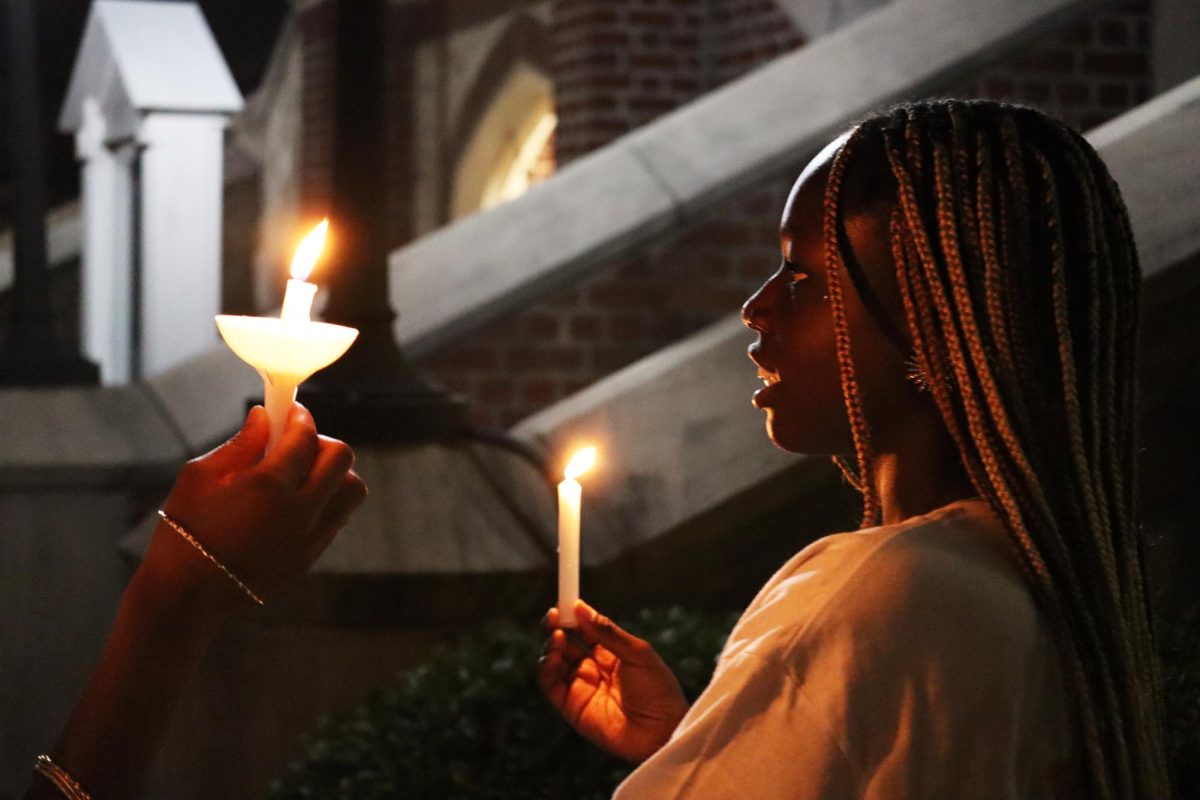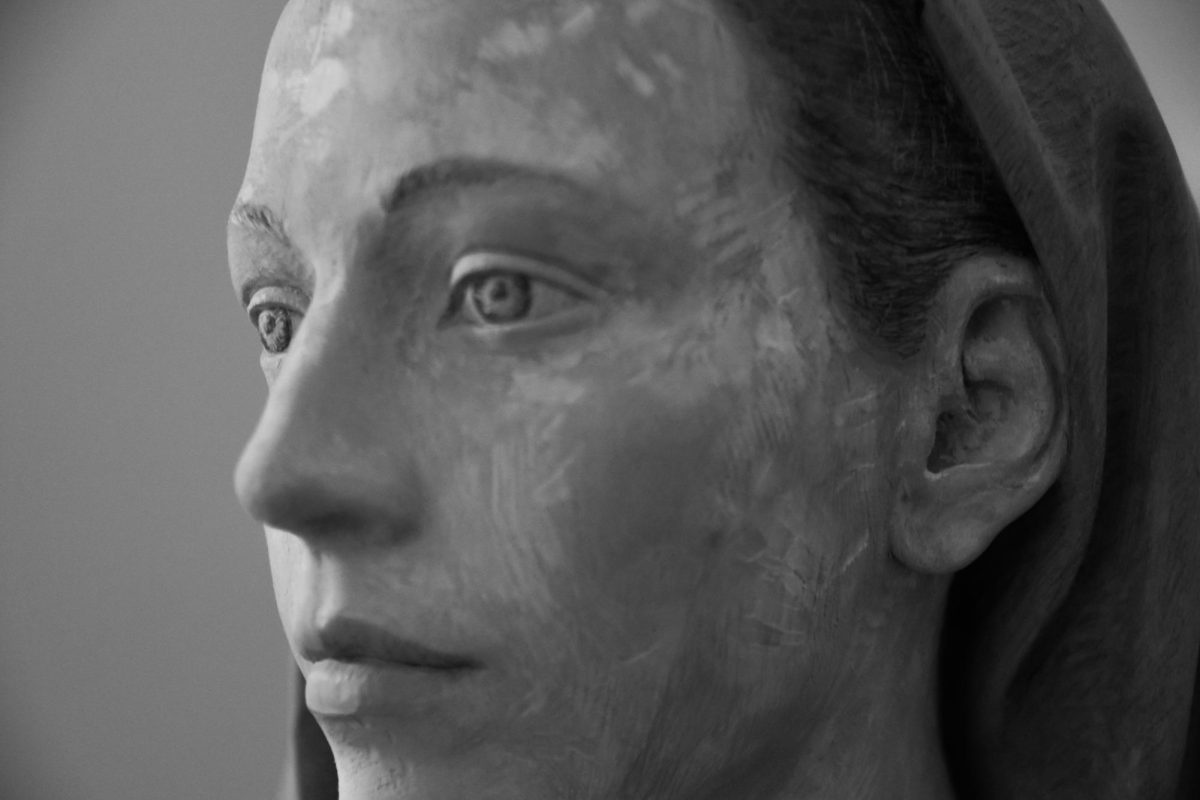Over the eight months that students study, party, live, learn and love here in New Orleans, Loyola develops into a home away from home.
With this established, Oak Street and its adorning variety of boutiques, cafes and galleries have blossomed into a home away from a home away from home.
If you take Dick Van Dyke, Janis Joplin and Leona Helmsley, add a pinch of caffeine, stir twice and heat at 350 degrees for 20 minutes, you’d get Oak Street.
Since Hurricane Katrina hit New Orleans two years ago, many businesses lining Oak Street have adapted to the changes post-Katrina New Orleans has demanded of them.
Some proprietors have taken the opportunity to launch their enterprise in previously occupied spaces while other business remained but simply changed owners and operating hours. Then there are the many others who refused to change at all, retaining the same basic practices instituted years before Katrina.
RUE DE LA COURSE
One such establishment is Rue de la Course, a favored coffee shop on the corner of Oak Street and Carrollton Avenue.
Popular among students for its spacious interior, free wi-fi access and proximity to campus, Rue de la Course retains its distinctive New Orleans flavor.
Since it received no flood damage, the decor remains the same, taking its patrons back to the time of Tennessee Williams and no air conditioning.
Housed in a former bank, Rue de la Course caters not only to the student market but also neighborhood residents and business owners, artists and people from across the metropolitan area who fancy the cafe’s signature iced coffee.
Owner Jerry Rapollo opened his first Rue de la Course on Magazine Street in 1990. Several ventures later, he opened the Oak Street location at the turn of the millennium, and for the past seven years, business has been flourishing.
“Believe it or not,” said manager Deborah Camonte, “we’ve actually been busier since the storm. For instance, when we first re-opened, the line stretched out the door.”
Camonte described the place as “never being dead,” as always having a constant flow of people making purchases and staying.
While many businesses waited well into Spring 2006 to reopen, Rapollo and his staff returned on Nov. 1, 2005, during what Camonte describes as “the busiest coffee season.”
To Rapollo, there was no question whether or not Rue de la Course would re-open after Katrina.
As Camonte said, “Why wouldn’t we reopen? We received no flood damage.” If New Orleans was going to come back, so would Rue de la Course.
HAASE’S SHOES AND YOUNG FOLK’S SHOP
Like Rue de la Course, Haase’s is an Oak Street, and arguably New Orleans, institution. But unlike Rue, which has been around for the past decade, Haase’s is slightly more established, operating on Oak Street since the 1920s.
At 8119 Oak St., Haase’s Shoes and Young Folk’s Shop has been helmed by the Haase family since its inception.
While Haase’s does service adults, they mainly outfit children’s feet. Their primary clientele are parents purchasing parochial school uniform shoes for their children.
Bruce Caliva, grandson of the original owners and current owner, is the resident authority on children’s shoes. He knows which schools require which shoes, what size would be best and which brands offer which benefits – an encyclopedia of children’s shoe knowledge, if you will.
Caliva admits that while not necessarily suffering, business is slower following Hurricane Katrina.
Prior to the storm, Haase’s employed eight staff members who had worked around an average of 11-and-a-half years for the company. Caliva now primarily manages the shop himself with the assistance of his wife and mother.
He attributes the decline in business to the fact that many of his regular clients simply haven’t returned. Caliva maintains he had a large customer base in New Orleans East, a neighborhood that is still struggling to recover in population from Katrina. As of January 2007, only half of New Orleans East’s 96,000 residents had returned to the neighborhood.
While Caliva did have support from New Orleans Easterners, Haase’s receives business from throughout the New Orleans metro area and also receives business through mail orders.
“The people shopping here are the ones that have returned,” Caliva said bluntly.
To Caliva there was no alternative to re-opening on Nov. 9, 2005. “It’s too big of an investment,” he shrugged.
As the former president and current treasurer of the Oak Street Business Association, Caliva is concerned not only with the success of his shop, but also the success of his neighbors.
He and the association encourage residents to shop local, to get away from the monotony of Starbucks and Wal-Mart on every third corner. “If you want to see a city survive,” he declared, “it’s necessary to support its small businesses.”
Z’OTZ
For the residents of Oak Street and its adjacent neighborhoods, their support is overwhelmingly in favor of local coffee houses like the trendy, bohemian chic Z’otz Coffeehouse.
At 8210 Oak St., renowned around the city as one of the only smoking-permissible coffee shops before the statewide smoking ban in January, Loyola students find a welcoming community of intellectuals, artists and hipsters. Here they can enjoy vegan options, live juice and exotic foods. Z’otz also offers Yerba Mate, a little known South American beverage that contains mantine, a caffeine alternative that provides nearly the same effects as caffeine without producing tremors and other adverse side-effects
When Michael and Suzanne Bartlett purchased the three-year-old coffee shop after Katrina, they primarily concerned themselves with preserving the atmosphere that it possessed under the previous owners.
As manager Kelly Dann confirms, “We are driven by our regulars. When Mike and Suzanne came in they met with all of us. They were open to suggestions and were really focused on getting things back to normal.”
While the coffee shop remains relatively the same, some modifications had to be made. “Before Katrina, we could plan for special events such as fashions shows and concerts – events that featured local artists,” said Dann.
This tradition hasn’t continued since the storm due to the fact that many of the bands and designers are touring or simply haven’t returned to New Orleans.
With all that it offered to customers, Z’otz did well pre-Katrina. Despite not offering all of the same services that it did before, Dann is adamant that business has improved since the hurricane.
“While I don’t have the books to back this up, I can say that we have been doing better since the storm,” Dann said. “A lot of that has to do with people staying after their purchase.”
While traditional coffee shops offer drive-through purchasing and other devices that cater to patrons who want to grab a cup of coffee and run, Z’otz offers alternatives for those who wish to stick around. You can relax in a Zen garden, play board games, read from the lending library, associate with your neighbors and search for a job.
Dann admits that when the coffee shop first re-opened, they were faced with obstacles, and that to achieve their current success, they had to make sacrifices.
While they were still receiving coffee and pastries, other suppliers had not returned. “I would have to run out to Wal-Mart in Metairie everyday to purchase cups,” lamented Dann.
For Dann, nothing has contributed to Z’otz’s success more than the patrons. “We’re so grateful to the regulars and the new regulars who have come to support us,” Dann said. “Storm or not, we would not be here without them. “
GOING, GOING, GONE
While Z’otz’s business is flourishing, the same cannot be said of Double M Feed that occupied 8211 Oak St. After a series of setbacks including staffing difficulties and looting, Double M’s owners surrendered and sold the business to Todd Andras.
Andras reopened the shop as Going, Going, Gone, a consignment store. He describes his shop, which is filled with every type of consumer good imaginable, like a page out of “Treasure Island.”
“You never know what treasure you’ll find in this store,” he said.
The consignment shop also offers customers pieces of New Orleans. Andras collected pieces of roofing tile and window frames from storm-damaged homes across the metro area. Each piece is painted by a local artist and bears an insignia from the neighborhood where it originated.
He admits that he has trepidation concerning Going, Going, Gone’s success, but it’s currently doing well.
GELATO PAZZO CAFe
No new entrepreneur understands success better than Vincent and Felicia Pigna, owners of the Gelato Pazzo Cafe.
It seems as if Italian ice-cream parlors are blossoming all over New Orleans. Gelato Pazzo at 8115 Oak St. spearheaded this post-Katrina revolution.
After vacationing in Europe, the Pignas were inspired to open their neo-European themed cafe on the Riverwalk to appeal to European tourists on cruise ship excursions.
Nine months ago, the Pignas moved to their current Oak Street location and became a neighborhood success almost immediately.
“It became an instant neighborhood place,” describes Vincent. As customers sit working on their laptops, young neighborhood children come in and out, greeting the proprietors as Mr. and Mrs. Pigna.
“I don’t see any other stores opening that are like us,” said Pigna. “We educated the public on gelato. You get a unique thing here.” The same can be said of all of Oak Street … you get a unique thing here.
With only a few exceptions, Oak remains like the rest of New Orleans: resilient, with its head held high above the floodwater, looking jazzy and acting classy.
Justin Templet can be reached at [email protected].






